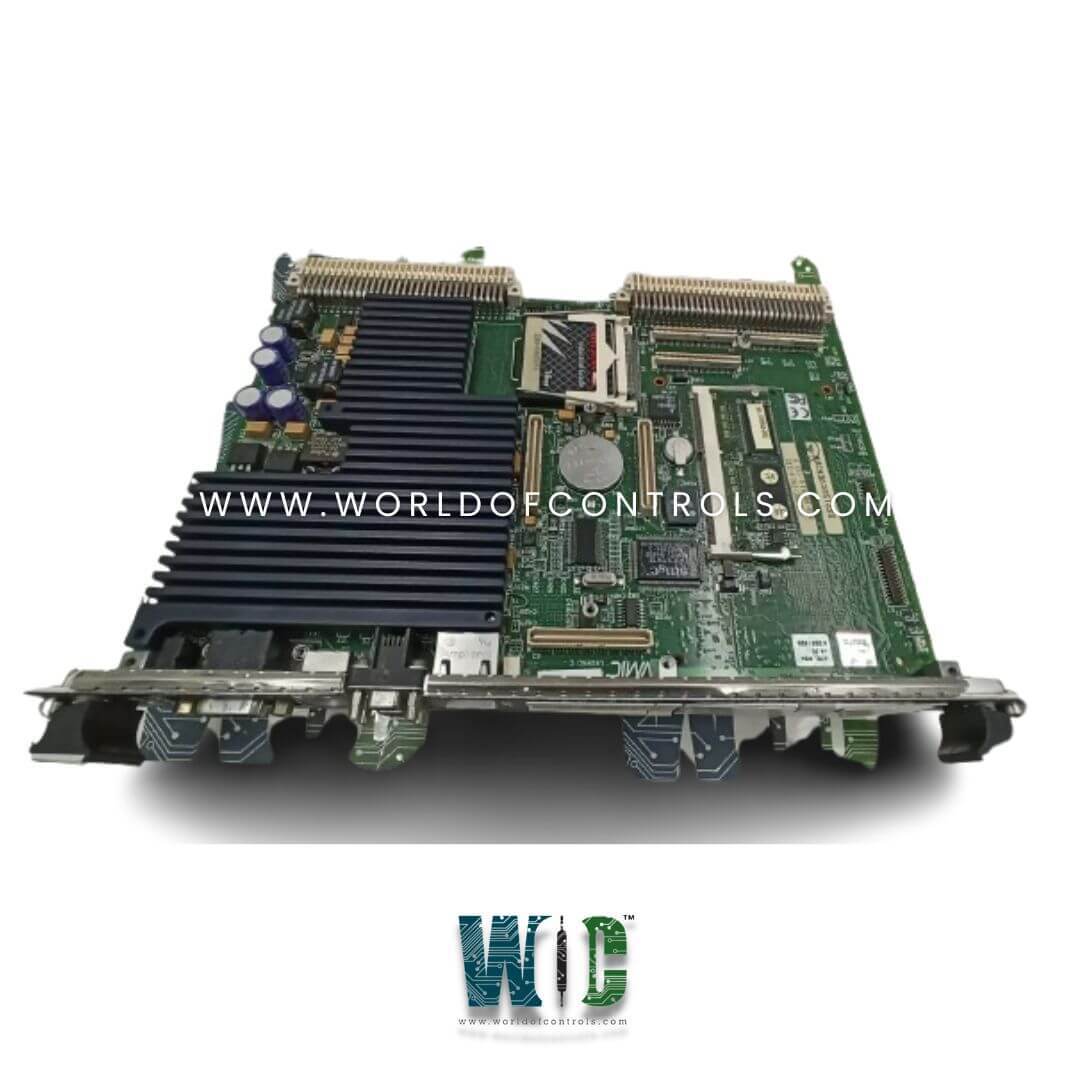SPECIFICATIONS
Part No.: IS215UCVEH2AC
Manufacturer: General Electric
Country of Manufacture: United States of America (USA)
Size: 13 in. x 7 in.
Temperature rating: 0 to 60 oC
Number of Channels: 13
Product Type: Controller Module
Availability: In Stock
Series: Mark VI
Functional Description
IS215UCVEH2AC is a controller module developed by GE. It is a part of Mark VI control system. The UCVEH2 stands as the standard Mark VI controller, serving as a pivotal component within the system architecture. Functioning as a single-slot board, it employs a robust 300 MHz Intel Celeron processor to manage system operations effectively. The controller is equipped with memory configurations of either 16 or 128 MB of flash memory, ensuring ample storage for critical system data. Additionally, it integrates 32 MB of DRAM, facilitating efficient and swift data processing within the system.
Processor Specifications
- Processing Power: 300 MHz Intel Celeron processor, renowned for its reliability, efficiency, and computational power. With a clock speed of 300 MHz, this processor delivers robust performance, capable of handling a wide range of system tasks and data processing requirements.
- Precision Execution: The Intel Celeron processor executes essential system functions with unparalleled precision and accuracy. Whether it's executing control algorithms, processing sensor data, or managing communication protocols, this processor ensures swift and efficient execution of tasks critical to the Mark VI system's functionality.
- Versatile Task Handling: Equipped with the Intel Celeron processor, the UCVEH2 controller possesses the versatility to handle a diverse array of tasks inherent to the operation of the Mark VI system. From real-time monitoring and control of industrial processes to data analysis and system diagnostics, the processor enables seamless multitasking, ensuring optimal performance under varying operational conditions.
- Enhanced Efficiency: The utilization of the Intel Celeron processor optimizes the energy efficiency of the controller, minimizing power consumption while maximizing processing capabilities. This efficient operation not only reduces operational costs but also contributes to the overall sustainability and environmental friendliness of the control system.
- Reliability and Durability: Backed by Intel's renowned reputation for reliability and durability, the Celeron processor instills confidence in the controller's long-term performance and longevity. Engineered to withstand the rigors of industrial environments, this processor ensures uninterrupted operation and dependable performance, even in the most demanding conditions.
Memory Configurations
- The controller offers flexibility in memory configurations, featuring options of either 16 or 128 MB of flash memory.
- This choice allows for tailored storage capacities, accommodating diverse system requirements and data storage needs.
- Moreover, the inclusion of 32 MB of DRAM enhances the controller's multitasking capabilities, ensuring efficient handling of concurrent processes and data flow within the system.
Connectivity via Ethernet Port
- Connectivity to the Universal Display Hub (UDH) is facilitated through a single 10BaseT/100BaseTX (RJ-45) Ethernet port integrated into the controller.
- This Ethernet port serves as the primary gateway, establishing a robust and high-speed connection between the controller and the UDH.
- This connectivity is crucial for data exchange, communication, and system control, ensuring seamless interaction between components within the Mark VI system architecture.
Ethernet Status LEDs
- The active LED serves as a real-time indicator of Ethernet connection activity. When blinking, it signifies ongoing data transmission or reception, indicating an active connection. This visual cue is invaluable for monitoring network traffic and ensuring that data is being transferred as expected. Conversely, a solid light indicates an inactive connection, where no data transfer is currently occurring. This distinction allows users to quickly identify network activity and troubleshoot connectivity issues if necessary.
- Link LED reflects the link speed of the Ethernet connection, providing insight into the efficiency of data transfer between the controller and connected devices or network. Typically, a yellow light indicates a 10BaseT connection, which operates at a lower speed, suitable for basic data transmission tasks. In contrast, a green light signifies a faster 100BaseTX connection, capable of handling larger volumes of data at higher speeds. This distinction is crucial for understanding the performance capabilities of the Ethernet connection and optimizing network efficiency accordingly. By observing the color of the Link LED, users can assess the speed of data transfer and make informed decisions regarding network configuration and optimization.
System Status LEDs
- The system status LEDs offer insights into different operational aspects of the controller.
- VME Bus SYSFAIL: Indicates any failure or abnormality within the VME bus, a critical system interconnection. A lit SYSFAIL LED notifies users of potential issues affecting the VME bus communication or functionality.
- Flash Activity: Illuminates during flash memory activity, showcasing read or write operations within the flash memory of the controller. It provides a visual indication of memory access and data transfer occurring within the controller's flash storage.
- Power Status: The Power Status LED serves as an indicator of the controller's power state. It typically shows whether the controller is powered on, off, or in a standby mode. A lit confirms the presence of power and the operational state of the controller.
The WOC team is always available to help you with your Mark VI requirements. For more information, please contact WOC.
Frequently Asked Questions
What is IS215UCVEH2AC?
It is a controller module developed by GE under the Mark VI series.
What do the Ethernet status LEDs signify on the controller?
Active LED indicates Ethernet activity. Blinking denotes an active connection, solid light indicates inactivity. Link LED reflects Ethernet link speed. Yellow for 10BaseT, green for 100BaseTX.
What insights do System Status LEDs offer on the controller?
VME Bus SYSFAIL Signals issues within the VME bus system interconnection. Flash activity illuminates during flash memory read/write operations. Power Status Indicates the controller's power state on, off, or standby.
Why are Ethernet Status LEDs important?
Activity indicator confirms Ethernet data transmission, aiding in assessing connectivity and data exchange.
